Transcription of Aruba 3810 Switch Series Data Sheet
1 DATA SHEETPRODUCT OVERVIEWThe Aruba 3810 Switch Series provides performance and resiliency for enterprises, SMBs, and branch office networks. With HPE Smart Rate multi-gigabit ports for high speed access points and IoT devices, this advanced Layer 3 network Switch delivers a better application experience with low latency, virtualization with resilient stacking technology, and line rate 40 GbE for plenty of back haul powerful Aruba ProVision ASIC delivers performance, robust feature support, and value with flexible programmability for the latest applications. The 3810 delivers resiliency and scalability via innovative backplane stacking technology and redundant, hot-swappable power supplies all in a convenient 1U form factor. It supports an advanced Layer 2 and 3 feature set with OSPF, IPv6, IPv4 BGP, Dynamic Segmentation, robust QoS, and policy-based routing are included with no software to deploy, use and manage using Aruba AirWave or Aruba Central.
2 Aruba ClearPass offers centralized security and external captive portal support. The switches offer a limited lifetime warranty. ENHANCED CAPABILITIESS oftware-defined networks Supports multiple programmatic interfaces, including REST APIs and Openflow and , to enable automation of network operations, monitoring, and troubleshootingUnified wired and wireless support Aruba ClearPass Policy Manager provides profiling, authentication, and policy management across multi-vendor wired and wireless networks Switch auto-configuration automatically configures Switch for different settings such as VLAN, CoS, PoE max power, and PoE priority when an Aruba access point is detected User Role defines a set of Switch -based policies in areas such as security, authentication, and QoS. A user role can be assigned to a group of users or devices, using Switch -based local user role or download from ClearPassARUBA 3810 Switch Series Dynamic Segmentation provides a secure tunnel that transports network traffic on a per-port or per-user role basis to an Aruba Controller.
3 In a per-user role Tunnel Node, users are authenticated by the ClearPass Policy Manager which directs traffic to be tunneled to an Aruba controller or Switch locally Static IP Visibility allows ClearPass to do accounting for clients with static IP addressesQuality of Service (QoS) Advanced classifier-based QoS classifies traffic using multiple match criteria based on Layer 2, 3, and 4 information; applies QoS policies such as setting priority level and rate limit to selected traffic on a per-port or per-VLAN basis Layer 4 prioritization based on TCP/UDP port numbers Class of Service (CoS) sets the IEEE priority tag based on IP address, IP Type of Service (ToS), Layer 3 protocol, TCP/UDP port number, source port, and DiffServKEY FEATURES Advanced Layer 3 Switch Series with backplane stacking, Dynamic Segmentation, low latency and resiliency Advanced security and network management via Aruba ClearPass Policy Manager, Aruba AirWave and Aruba Central Modular line rate 10 GbE and 40 GbE ports for wireless aggregation HPE Smart Rate for high-speed multi-gigabit bandwidth (IEEE )
4 And PoE+ power Software defined ready with REST APIs and OpenFlow supportDATA Sheet Aruba 3810 Switch Series Bandwidth shaping -Port-based rate limiting provides per-port ingress-/egress-enforced increased bandwidth -Classifier-based rate limiting uses an access control list (ACL) to enforce increased bandwidth for ingress traffic on each port -Supports per-port, per-queue egress-based reduced bandwidth Remote intelligent mirroring mirrors selected ingress/egress traffic based on an ACL, port, MAC address, or VLAN to a local or remote HPE 8200 zl, 6600, 6200 yl, 5400 zl, 5400R, or 3500 Switch anywhere on the network Remote monitoring (RMON), Extended RMON (XRMON), and sFlow provide advanced monitoring and reporting capabilities for statistics, history, alarms, and events Traffic prioritization allows real-time traffic classification into eight priority levels that are mapped to eight queues Unknown Unicast Rate Limiting throttles unicast packets with unknown destination addresses and limits flooding on the VLANS implified management and configuration Flexible management Supports both cloud-based Central and on-premise AirWave without ripping and replacing switching infrastructure Aruba Central cloud-based management platform offers simple, secure, and cost effective way to manage switches Built-in programmable and easy to use REST API interface provides configuration automation for campus networks Friendly port names allows assignment of descriptive names to ports IEEE Link Layer Discovery Protocol (LLDP)
5 Advertises and receives management information from adjacent devices on a network, facilitating easy mapping by network management applications Command authorization leverages RADIUS to link a custom list of CLI commands to an individual network administrator s login; an audit trail documents activity Multiple configuration files stores easily to the flash image Dual flash images provides independent primary and secondary operating system files for backup while upgrading Out-of-band Ethernet management port enables management over a separate physical management network; and keeps management traffic segmented from network data traffic Zero Touch Provisioning (ZTP) simplifies installation of the Switch infrastructure using Aruba Activate-based or DHCP-based process with AirWave and Central Network Management Unidirectional link detection (UDLD) monitors the link between two switches and blocks the ports on both ends of the link if the link goes down at any point between the two devices IP SLA for Voice Monitor quality of voice traffic with UDP Jitter and UDP Jitter for VoIP testsConnectivity Jumbo frames on Gigabit Ethernet and 10-Gigabit Ethernet ports allow high-performance remote backup and disaster-recovery services IEEE Power over Ethernet (PoE+) provides up to 30 W per port that allows support of the latest PoE+ capable devices such as IP phones, wireless access points, and security cameras, as well as any IEEE compliant end device.
6 Eliminates the cost of additional electrical cabling and circuits that would otherwise be necessary in IP phone and WLAN deployments Support for pre-standard PoE detects and provides power to pre-standard PoE devices Choice of uplinks -SFP+ uplink models provide fiber-optic (up to 70 km) or direct-attach-cable (DAC) connectivity -10 GBASE-T uplink models offer 10 GbE speeds, using standard RJ-45 connectors and standard twisted-pair cabling up to 100 m Auto-MDIX provides automatic adjustments for straight-through or crossover cables on all RJ-45 ports IPv6 -IPv6 host enables Switch management in an IPv6 network -Dual stack (IPv4 and IPv6) transitions IPv4 to IPv6, supporting connectivity for both protocols -MLD snooping forwards IPv6 multicast traffic to the appropriate interface -IPv6 ACL/QoS supports ACL and QoS for IPv6 traffic -IPv6 routing supports static, RIPng, OSPFv3 routing protocols -6in4 tunneling supports encapsulation of IPv6 traffic in IPv4 packets -Security provides RA guard, DHCPv6 protection, dynamic IPv6 lockdown, and ND snoopingDATA Sheet Aruba 3810 Switch SERIESP erformance and efficiency Selectable queue configurations allows for increased performance by selecting the number of queues and associated memory buffering that best meet the requirements of the network applications Energy-efficient design -80 PLUS Silver Certified Power Supply increases power efficiency and savings -Energy-efficient Ethernet (EEE)
7 Support reduces power consumption in accordance with IEEE Meshed stacking technology -High-performance stacking provides up to 336 Gbps of stacking throughput; each 4-port stacking module can support up to 42 Gbps in each direction per stacking port -Ring, chain, and mesh topologies support up to a 10-member ring or chain and 5-member fully meshed stacks; meshed topologies offer increased resiliency vs. a standard ring -Virtualized switching provides simplified management as the switches appear as a single chassis when stacked Aruba Provision ASIC provides very low latency, increased packet buffering, and adaptive power consumptionResiliency and high availability Virtual Router Redundancy Protocol (VRRP) allows groups of two routers to back each other up dynamically to create highly available routed environments in IPv4 and IPv6 networks Nonstop switching and routing improves network availability to better support critical applications, such as unified communication and mobility.
8 Traffic will continue to be forwarded during failovers, when the backup member of the stack becomes the commander IEEE Link Aggregation Protocol (LACP) and Hewlett Packard Enterprise port trunking support up to 144 trunks, each with up to 8 links (ports) per trunk IEEE Multiple Spanning Tree provides high link availability in multiple VLAN environments by allowing multiple spanning trees; provides legacy support for IEEE and IEEE Dual hot-swappable power supplies -Increased resiliency with secondary power supply providing complete Switch power redundancy in case of power line or supply failure -Secondary power supply increases available PoE+ power Distributed trunking enables loop-free and redundant network topology without using Spanning Tree Protocol; allows a server or Switch to connect to two switches using one logical trunk for redundancy and load sharing SmartLink provides easy-to-configure link redundancy of active and standby linksLayer 2 switching IEEE QinQ increases the scalability of an Ethernet network by providing a hierarchical structure; connects multiple LANs on a high-speed campus or metro network VLAN support and tagging supports the IEEE standard and 4096 VLANs simultaneously IEEE protocol VLANs isolate select non-IPv4 protocols automatically into their own VLANs MAC-based VLAN provides granular control and security; uses RADIUS to map a MAC address/user to specific VLANs Rapid Per-VLAN Spanning Tree (RPVST+) allows each VLAN to build a separate spanning tree to improve link bandwidth usage; is compatible with PVST+ Aruba 3810 Switch meshing dynamically load balances across multiple active redundant links to increase available aggregate bandwidth.
9 Allows concurrent Layer 3 routing GVRP and MVRP allows automatic learning and dynamic assignment of VLANsLayer 3 services Loopback interface address defines an address in Routing Information Protocol (RIP) and Open Shortest Path First (OSPF), improving diagnostic capability Route maps provide more control during route redistribution; allow filtering and altering of route metrics User datagram protocol (UDP) helper function allows UDP broadcasts to be directed across router interfaces to specific IP unicast or subnet broadcast addresses; and helps prevent server spoofing for UDP services such as DHCP DHCP server centralizes and reduces the cost of IPv4 address management Bidirectional Forwarding Detection (BFD) enables link connectivity monitoring and reduces network convergence time for static route, OSPFv2, and VRRPDATA Sheet Aruba 3810 Switch SERIESL ayer 3 routing Static IP routing provides manually configured routing for both IPv4 and IPv6 networks OSPF provides OSPFv2 for IPv4 routing and OSPFv3 for IPv6 routing Policy-based routing makes routing decisions based on policies set by the network administrator Border Gateway Protocol (BGP) provides IPv4 Border Gateway Protocol routing, which is scalable, robust, and flexible Routing Information Protocol (RIP)
10 Provides RIPv1, RIPv2, and RIPngSecurity Control Plane Policing sets rate limit on control protocols to protect CPU overload from DOS attacks Source-port filtering allows only specified ports to communicate with each other RADIUS/TACACS+ eases Switch management security administration by using a password authentication server Secure shell encrypts all transmitted data for secure remote CLI access over IP networks Secure Sockets Layer (SSL) encrypts all HTTP traffic, allowing secure access to the browser-based management GUI in the Switch Port security allows access only to specified MAC addresses, which can be learned or specified by the administrator MAC address lockout prevents particular configured MAC addresses from connecting to the network Detection of malicious attacks monitors 10 types of network traffic and sends a warning when an anomaly that potentially can be caused by malicious attacks is detected Secure FTP allows secure file transfer to and from the Switch .
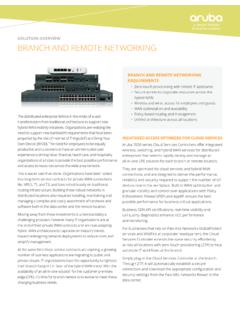
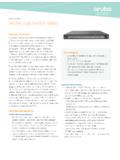

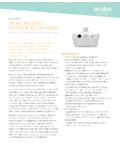
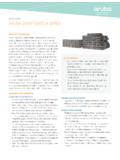
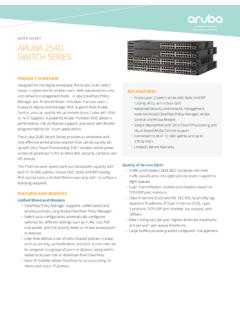
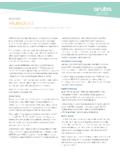
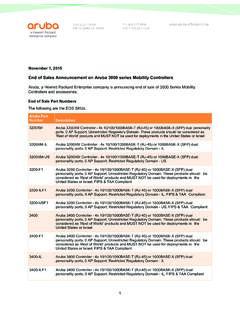
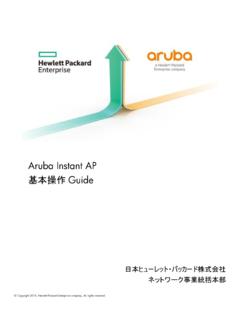
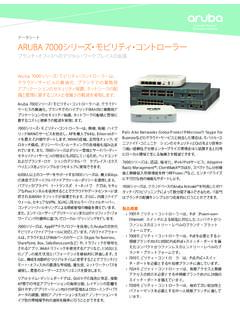
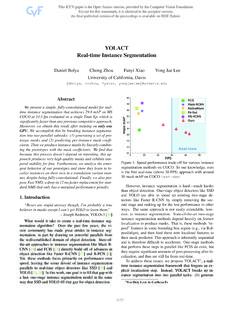


![Abstract arXiv:1411.4038v2 [cs.CV] 8 Mar 2015](/cache/preview/e/8/a/1/0/5/9/a/thumb-e8a1059a2748cde7ba3d756f44e4ca34.jpg)